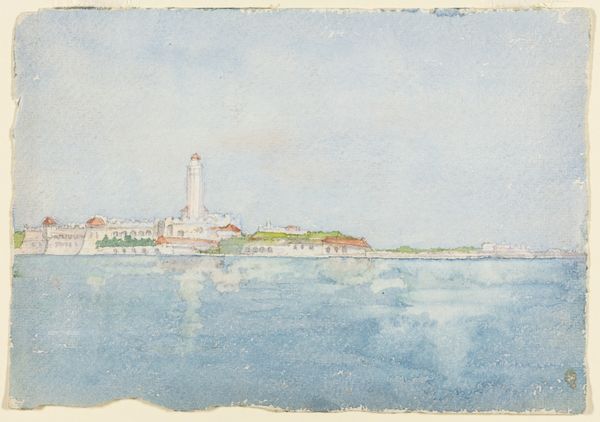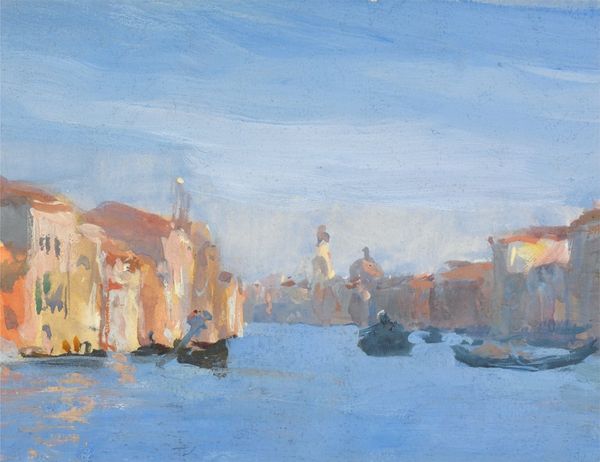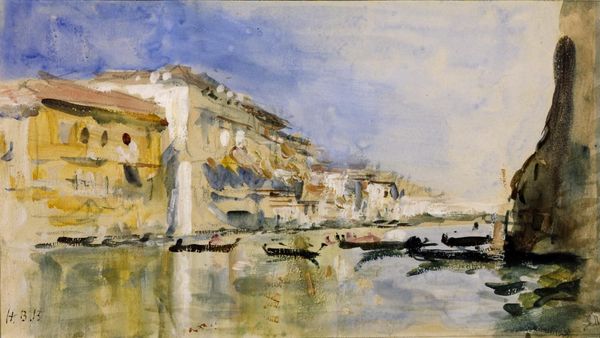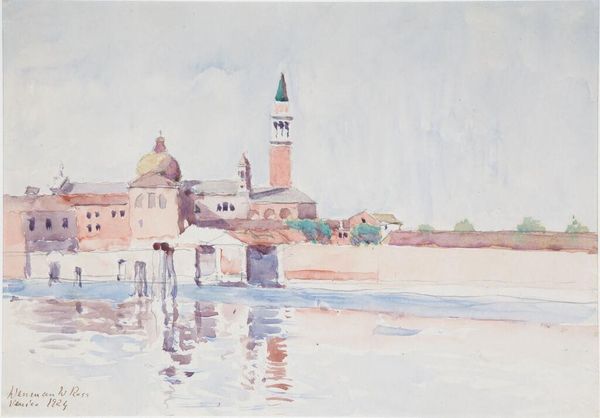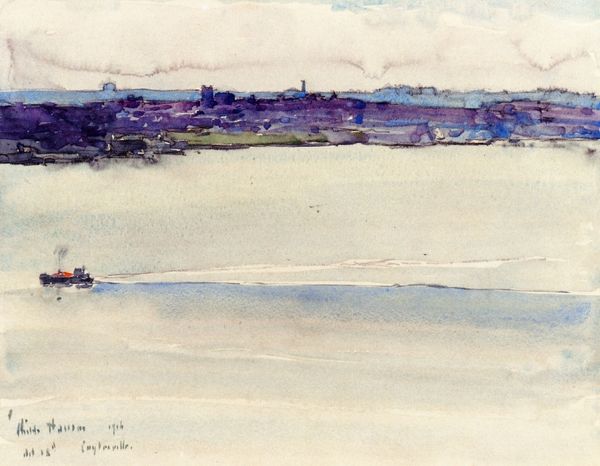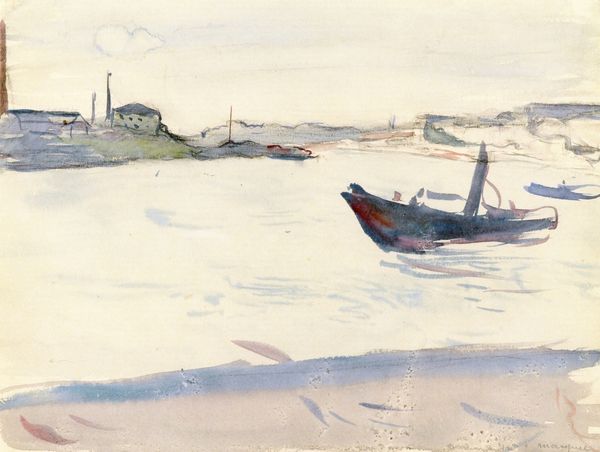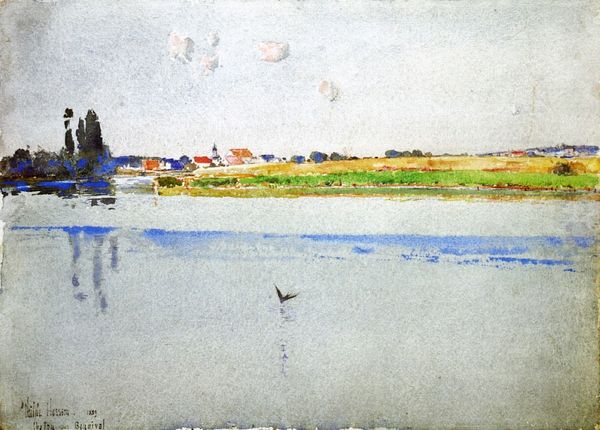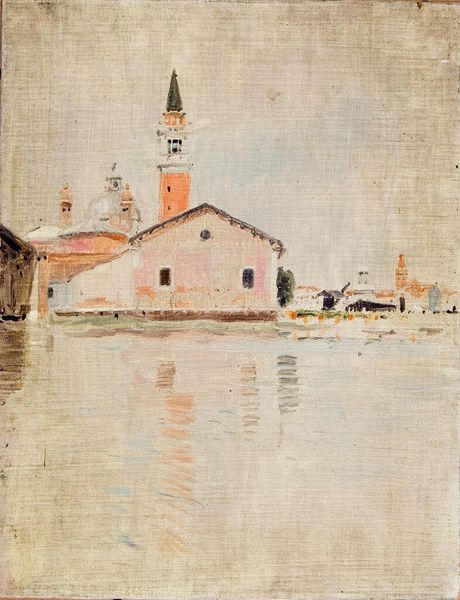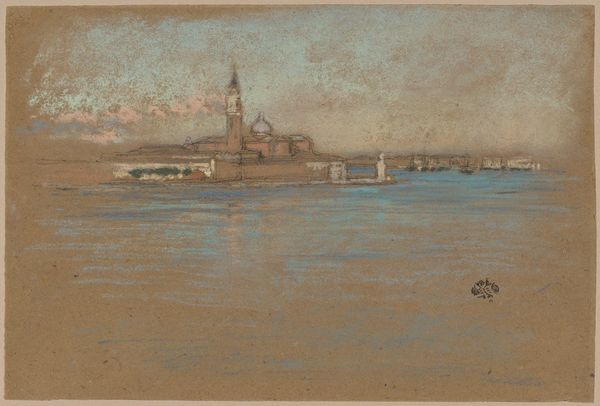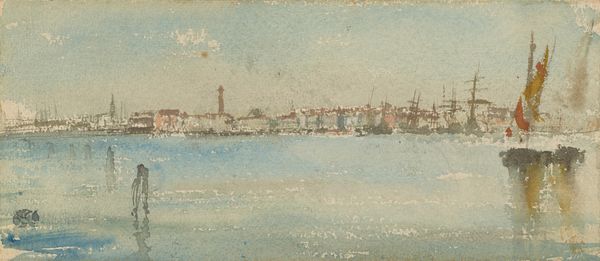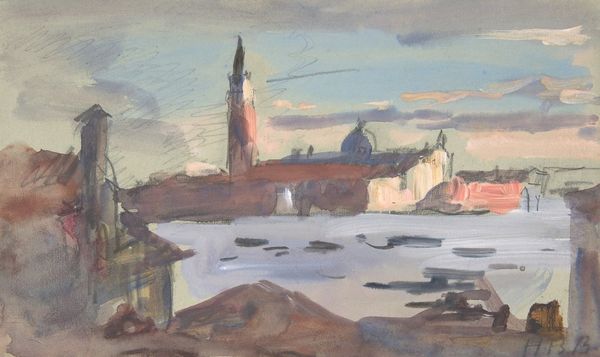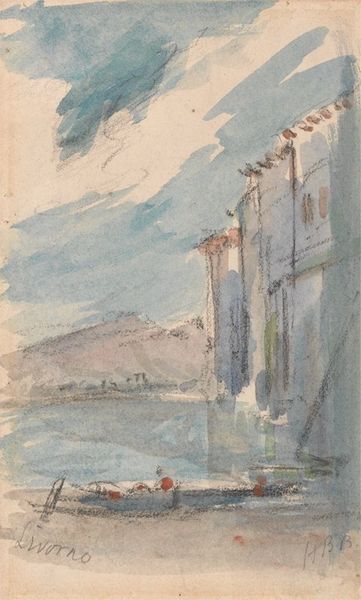
Copyright: Public domain
Editor: So, this is Childe Hassam's "San Pietro, Venice" from 1883. It’s watercolor on paper, and it gives off this beautifully serene feeling. What strikes me most is how the buildings and the water sort of mirror each other in color and texture. What do you see in this piece, looking at it from your perspective? Curator: It’s more than just serenity, isn't it? The buildings, rendered in those earthy siennas, suggest a solid past, a weight of history. The water, reflecting that history but also fluid and ever-changing, creates a compelling visual tension. The dome speaks to the enduring power of the Church. What emotional echoes does that architectural silhouette conjure for you? Editor: I suppose it's the sense of permanence and grandeur of Venice that's captured through such light, transient means, which is fascinating. Do you think Hassam deliberately played with that contrast? Curator: Absolutely. Hassam was keenly aware of how we perceive symbols, and how cultural memory is embedded in visual forms. The very act of painting Venice, a city practically synonymous with beauty and decay, through the fleeting medium of watercolor…it suggests an understanding of time, memory, and the way the past is constantly being re-presented to us. Consider the campanile and its verticality–an aspiration for the heavens contrasting with the horizontal plane of earthly life. What meaning might those angles hold for the viewer? Editor: I hadn’t considered the contrast between the vertical tower and the horizontal landscape. Now it highlights how art and architecture influence the viewers interpretation, layering meaning through time! Curator: Precisely. Hassam prompts us to contemplate the relationship between place, memory, and the symbols through which we experience them.
Comments
No comments
Be the first to comment and join the conversation on the ultimate creative platform.
